Los Angeles Times arts and entertainment writers and critics look back at a 2017 where gender and race upended the industry.
30 essential Los Angeles records of 2017 include tunes from Cuco, Kelela and Sparks
Like wealth disparity in America, the divide between L.A.-based musical megastars and the other 99% of musicians reveals the extent to which big business controls the narrative.
While the headliners get prominent pushes on streaming services such as Spotify and Apple Music, a whole subset of artists release music into a sonic black hole. Absent placement on key playlists or a major media push, the music lies in wait on faraway servers.
Which is to say, is there too much recorded music in the world? Yes. Is most of it forgettable? Certainly. Below are 30 albums, alphabetically arranged, by Los Angeles-area artists issued this year that deserve your investment. (Note: Kendrick Lamar’s “Damn.” is excluded from this list to make room for a lesser-known artist.)
Cuco, “Songs4You” (Cuco). This year a teenage Chicano romancer from Hawthorne named Omar Banos, just out of high school, went viral and prompted a major bicoastal bidding war. A first-generation Mexican American whose obsession with Tame Impala and classic Mexican balladry became entangled with his knack for home recording, as Cuco he’s drawn thousands of Twitter and Instagram followers, many of them Chicana, who have internalized every vocal inflection on “Songs4You.”
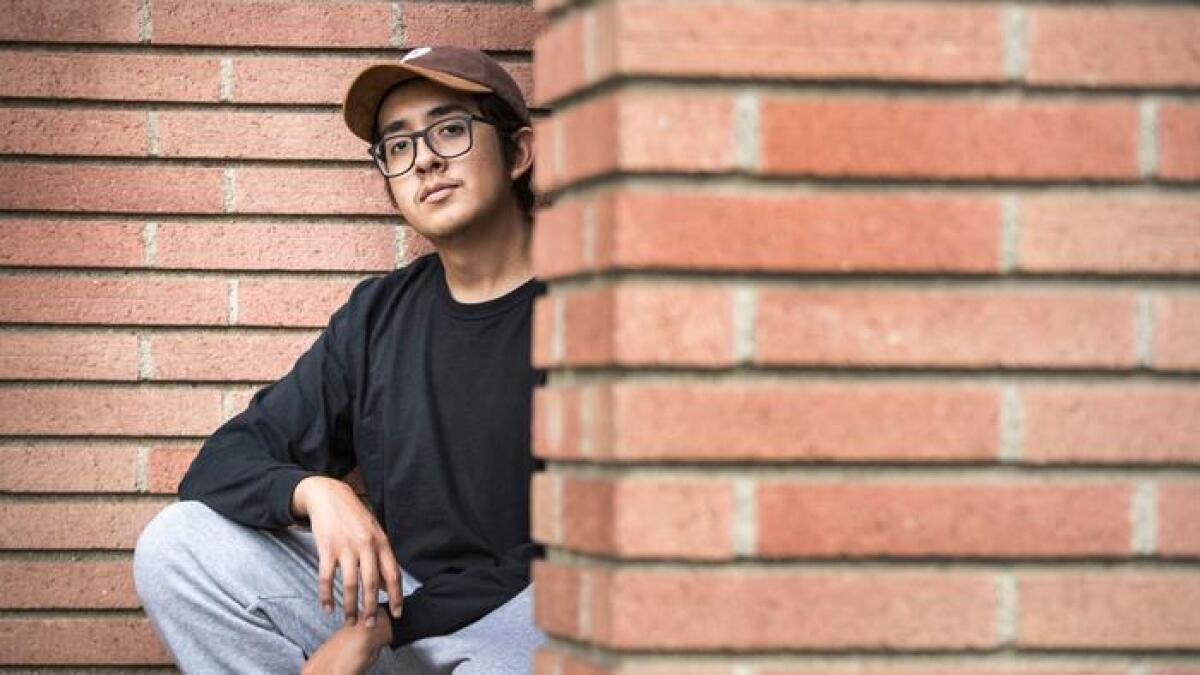
Viet Thanh Nguyen’s two favorite reads of 2017
I was late to reading Paul Beatty’s “The Sellout” but loved it as I knew I would, having been a fan since his 2001 novel “The White Boy Shuffle.” He wrote so many lines and deployed so many ideas I wished I had, beginning with the legal case that begins the novel: Me vs. America.
Less well known than “The Sellout” is Kao Kalia Yang’s “The Song Poet.” Her second memoir is a deeply moving account of her Hmong father, a working-class machinist in English-speaking America but a world-class song poet in the Hmong language. If you have a choice between spending 18 hours on a Vietnam War documentary or reading Yang’s book — read Yang’s book. You’ll learn something new, including how the Vietnam War was also fought in Laos and devastated the Hmong people.
Susan Straight read more than 500 novels this year. But her favorite is a memoir.
You might not believe it. I read or re-read more than 500 novels this year, to make an epic interactive map of our literary nation with regional fiction. There are 737 novels on that map, which I made for Granta. In choosing specific locations for each novel, I often stayed up all night re-reading a favorite book, or finding a new treasure. I drove across the country, re-reading books in the places where they were set: Stephen King’s “Carrie” in Maine, Joyce Carol Oates’ “Marya: A Life” in upstate New York, Toni Morrison’s “The Bluest Eye” in Lorain, Ohio, Mary O’Hara’s “My Friend Flicka” in Wyoming, Vu Tran’s “Dragonfish” in Las Vegas. The last novel I added to the map was among my favorites of 2017: “Woman No. 17,” by Edan Lepucki, so precise and laser-like in depictions of women in wider Los Angeles, from the Hollywood Hills to the Valley.
But the book that entranced me, one I carried around the country and recommended to people in every state, was a slim memoir not set in America, but Colombia. “The Book of Emma Reyes: A Memoir,” translated by Daniel Alarcon, consists of 23 letters written to set down Reyes’ early life: on a garbage heap in Bogota she and other children attempt magic; her truly evil mother transports her children to country towns Guateque and Fusagasugá, where disaster ensues; finally she abandons her daughters, 7 and 6, at a train station. Reyes spends fifteen years at a Catholic orphanage in Bogota, where she works like a small animal. Whether watching fireworks and bulls destroy a village, or lying on her back for six hours a day, inches from an ornate altar cloth where she receives a needle threaded with gold and makes a tiny new hole for the next stitch, Reyes’ voice is wondrous.
Hilarious essays and a mighty children’s book: Rebecca Carroll’s top picks of 2017
“We Are Never Meeting in Real Life,” Samantha Irby’s collection of candid, funny and deliberate essays will make you laugh until you pee and cry and ache in your belly. It’s like nothing you’ve ever read, because Irby is like no one you’ve ever met, although you will never really know, because I’m pretty sure the title of this book does not lie. Take heart, though, meeting Irby in writing is plenty rewarding enough. From the essay “A Case for Remaining Indoors”: “Picture it: you’re chilling in the corner at a party full of people you’ve never met before and hated on sight, humming the lyrics to a Coldplay song to yourself to drown out the Swedish death metal the hostess put on to prop up her apparition of coolness, then here comes ... who makes her own yogurt and just discovered Ta-Nehisi Coates condescending to you about how damaging reality shows are to impressionable youth.” I mean, can you blame her for never wanting to meet anyone in real life?
I don’t think adults spend enough time reading children’s books. To be sure, not all of them are great grown-up reads, but I’d like to think, both as a parent and an avid reader, that the ones we want to share most with our kids are the ones we should take the time to read on our own, too. Such is the case with “Crown: An Ode to the Fresh Cut” by Derrick Barnes, beautifully illustrated by Gordon C. James, a real standout that reads like spoken word poetry in its bold tenor and lyrical writing. And it’s not just a pleasure to read, it also does something important, and that is to show up and show out for black kids, black culture and black language. It’s about that time honored tradition for black folks of sitting in the chair at the barbershop, and the power of being seen as a black boy beyond stereotype out here in America. Barnes writes: “A fresh cut does something for your brain, right? It hooks up your intellectual.” Hook yourself up with this sweet and mighty book, both for you and your kids.
Alexander Chee recommends essays by Mary Gaitskill and Yiyun Li
I’ve loved and admired Mary Gaitskill’s essays over the years as they’ve appeared in between her novels and short story collections, and here, collected at last in “Somebody with A Little Hammer,” with a cover she designed herself, I felt like I had not just a collection of her essays but an essential aspect of her intellect. Personal essays are here alongside major reviews, and whether reflecting on her lost cat, Updike, or her religious upbringing, Gaitskill brings her tremendous critical capacities to bear and the results are surprising, delightful and sublime.
Yiyun Li is one of our great living social realist fiction writers, and in “Dear Friend, from My Life, I Write to You in Your Life,” she gives us a memoir in interconnected essays, drawing the connections she has made over the years between the writing she loves and the life she has endeavored to live. As she reflects on leaving Beijing for America, leaving a career as a doctor to become a writer, she takes us through the writers that have kept her alive — William Trevor, Marianne Moore, Ivan Turgenev and Katherine Mansfield, whose work supplies the title — and the result is an unforgettable portrait of the life lived behind her own great works.
David Kipen recommends an overlooked book about a lost LA hero
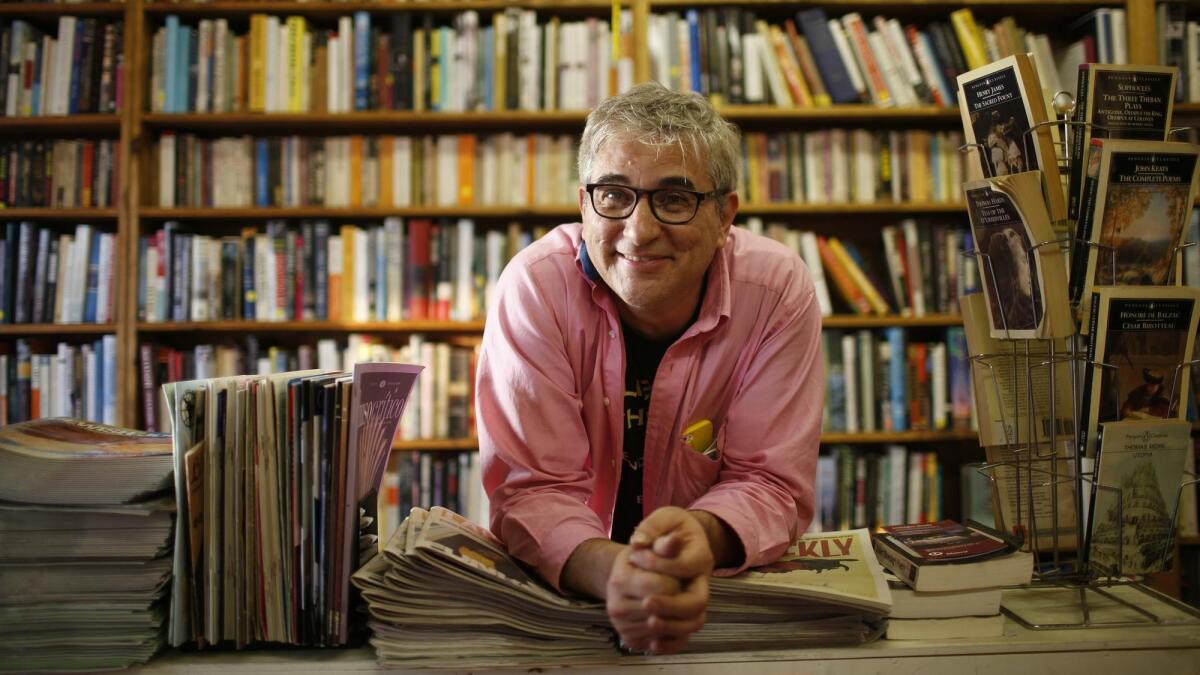
If Rachel Maddow and H.L. Mencken had conceived a child in Los Angeles in 1837, he’d be Francisco P. Ramírez. Paul Bryan Gray’s criminally overlooked “A Clamor for Equality” (published in 2012) tells the story of this trilingual teenage journalism prodigy, who editorialized against police brutality, vote-selling and lynching. Since devouring Gray’s richly researched biography, I’ve spent three months teaching, translating and even writing fiction about this lost hero. What would it finally take for Ramírez to get his day, and his due? Maybe if the Getty’s next triennial PST theme were “2020 Hindsight: Art in Dialogue with L.A. History”…
Adriana E. Ramírez recommends an unusual culinary history
Good nonfiction writers are able to use the smallest details to recreate entire lives. In “What She Ate: Six Remarkable Women and the Food That Tells Their Stories,” Laura Shapiro uses food to illustrate the lives of six cultural and political figures: Dorothy Wordsworth, Rosa Lewis, Eleanor Roosevelt, Eva Braun, Barbara Pym and Helen Gurley Brown. Food is never “just food,” but instead offers insight into the life of mind of each woman, as well as into the exterior luxuries and hardships each faced. Dorothy Wordsworth (William’s sister) ate blood pudding one night, and Shapiro offers entertaining analysis on the significance of such a happening. Both a biography and a book of culinary history, “What She Ate” is charming, well-researched, and thoughtful. Food has never meant so much.
‘Mudbound’ tops Mark Olsen’s 10 best films of 2017
It’s as if the movies answered our call. In a year that has seemed long and confusing, movies became an unexpected centering point, a beacon. As the era of “Peak TV” has toppled over on itself, cinema at least partly took back the reins of cultural conversation. Amid an ongoing onslaught of news and information, the idea of genuinely focusing on something else for a few hours often seemed the better thing to do.
Going back to January’s Sundance Film Festival, which coincidentally overlapped with the presidential inauguration, the movie year has been locked in a strange push-pull with current events and the real world. The world on-screen became a renewed source of reflection, both by presenting differing views and allowing for a focal point of contemplation. From the hypnotic horror of “Get Out” on through the eccentric wisdom of “Star Wars: The Last Jedi,” contemporary reality was filtered through cinematic storytelling this year to allow people a moment to get outside their own heads while also doing some free and deep thinking.
Best theater in 2017: Our critic’s top picks, including Midler, Metcalf and Bruuuuce
The power of individual performers redeemed 2017, the theatrical year of Bette Midler in “Hello, Dolly!”, “A Doll’s House, Part 2” and “Springsteen on Broadway,” according to Times critic Charles McNulty.
Politics were unavoidable after last year’s election shocker, but thrilling performances made it a little easier to collectively cope.
Overrated / Underrated: 2017 was the worst — or was it?
UNDERRATED
The coming digital crash: For all the misguided “pivots to video” in media this year, there’s a very real possibility that the internet may not be the limitless, life-enhancing cabinet of curiosities it once was. Sales of e-readers are down while vinyl and record player purchases continue to rise, the rising influence of social media keeps making us more anti-social and for all the emphasis on streaming media, efforts to end net neutrality could transform a fast network connection into a luxury item. The good news? Physical copies of books, movies and music remain a renewable resource — and you only buy them once.
2017: With its fires, floods, mass shootings and a return of global nuclear war into the rotation of waking nightmares, this year was so chaotic it was easy to lose track of the good things that happened despite all the crumbling chaos surrounding them. To name a few, “Get Out” and “Lady Bird” have real chances of being best picture contenders, Kendrick Lamar and Mavis Staples are making records while you are alive, and “The Deuce” or a bonkers “Twin Peaks” revival are just two dispatches from “Peak TV” that can distract you from current events. Great art can’t fix everything, but it sure helps sometimes.
Twitter, sexual abuse and racial divides shook the entertainment industry and beyond in 2017
It was a year we couldn’t have fathomed, a year of strife and weirdness, a time of wild tweets and endless scandal, when movies gave us reflection, Ken Burns jolted us back to Vietnam, and the entertainment industry was shaken by sexual abuse accusations that raised disturbing questions about what’s behind the art, film and music that shape American culture.
The calendar began with arguments in the media over the crowd size at President Trump’s inauguration. It will end, at least by Hollywood’s rubric, with “The Post,” Steven Spielberg’s rendering of the Washington Post’s decision in 1971 to publish the classified Pentagon Papers that exposed U.S. lies around the war in Southeast Asia. There’s symmetry to those bookends, especially these days with the media covering a combative and secretive White House.
The year spun like a prickly edged whisper through mind and soul.
It feels like something has shifted. It’s too bad that it’s probably because so many of the women that were assaulted by Harvey Weinstein are famous and white and everybody knows them. This has been going on a long time to black women and other women of color, and it doesn’t get out quite the same.
— Jane Fonda
A trying and triumphant year in TV and beyond for women
Something funny happened on that regressive trip back to the 1950s, or whenever it was that America was greater than it is now. Scripted programming with strong, smart and poignant female narratives arrived like a swaggering, pissed off Jessica Jones, obliterating notions that nasty women were gone with Hillary Clinton’s candidacy.
Hulu’s “The Handmaid’s Tale” and “Harlots,” FX’s “Feud” and Netflix’s “Godless” all spoke to subjugated women outsmarting — if not blowing a hole through — the patriarchy. It’s no coincidence that shows like these caused national conversations as powerful, accused sexual predators like Harvey Weinstein and Bill O’Reilly fell.
The collective ADD we felt last year with the election coverage and onslaught of new shows that You Just Have to See! was somewhat remedied by a renewed sense of purpose in 2017’s lineup.
Best of 2017 | Jazz: Vijay Iyer, Ron Miles and Nicole Mitchell look ahead
In a year when disaster seemed only a tweet away, music seemed more precious than ever.
Capable of both providing shelter and uniting us, the sounds on these albums amplify voices — some new, some familiar — that demanded to be heard, whether in the pointed interstellar imaginings of Nicole Mitchell, the maximalist virtuosity of L.A.’s Cameron Graves or the dignified cornet of Ron Miles in a record that drew from the civil rights struggle.
Instead of the current chaos, the best of 2017 always focused on what lay ahead.
Best art in 2017: Our critic’s top 10 exhibitions, plus one very big worry
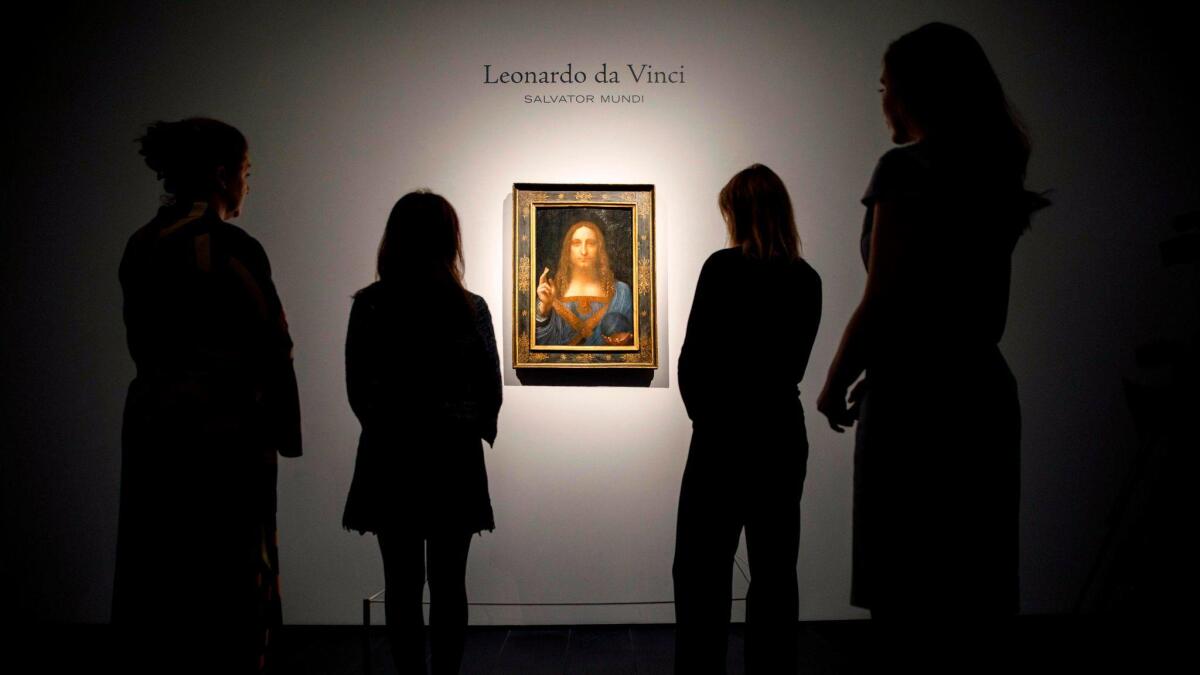
Art museums, which are not for profit, now coexist uneasily with a hyper-aggressive art market, where making bare-knuckle profit from luxury goods reigns supreme. For museums, the stress shows, and often it’s not pretty.
Good things, of course, continue to happen in museums — in L.A., most notably, the Getty-funded initiative to underwrite a slew of exhibitions of Latino and Latin American art, the emergence of the long-sleepy California African American Museum as a lively destination and the announcement that a museum will be built at UC Irvine specifically to trace the development of California art. Here, in chronological order of their openings, are the 10 best museum exhibitions I saw in Los Angeles this year:
Classical music in 2017: After an astounding year, the L.A. Phil deserves a top-10 list of its own
Now look what the Los Angeles Philharmonic has done.
It isn’t enough to be America’s most important orchestra, a progressive opera company, a leader in enlightened arts administration, a major festival maker, an unbelievably fertile factory for new music, an international trailblazer in community involvement and education. The incurably disruptive L.A. Phil has even gone and upended the year-end 10-best list.
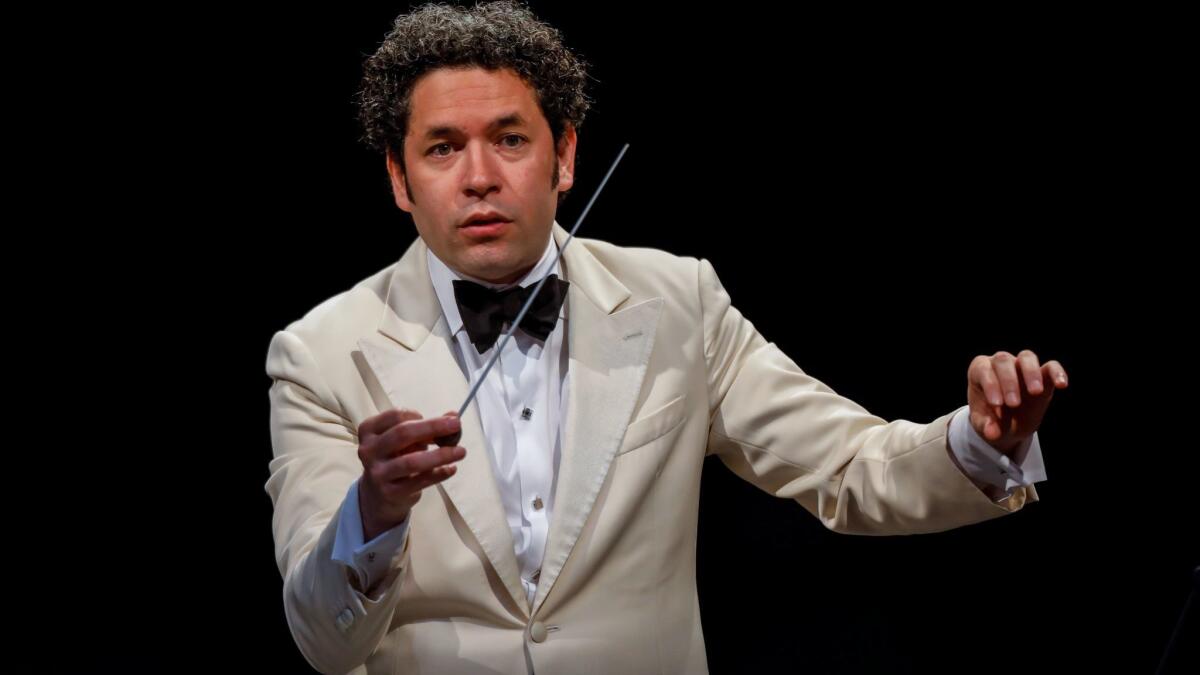
In 2017, pop music either sought shelter from the storm or ran straight into it
Even now, eight months after I first heard it, the 10-second stretch of music gets me every time.
It comes at the end of the second verse of “Love,” a song from Kendrick Lamar’s album “Damn,” and the thing that’s so gripping is the way the Compton rapper suddenly shrinks a vast, roiling world down to the psychic space between two people.
A small guy with big ideas, he’s been zoomed way out on “Damn,” pondering faith and race and the meaning of success — what America wants from a celebrity and what it doesn’t want from a black man.
The year the art came down
The protesters arrived two by two, wearing black suits and face masks that bore the face of the museum’s curator of 20th century art.
It was the summer of 1981 and the Los Angeles County Museum of Art was celebrating a trio of exhibitions marking the city’s bicentennial with a Champagne reception interrupted by more than 100 protesters carrying gray and pink balloons that read: “Where are the Women and Minorities?”
Standing out from the black-clad protesters in masks bearing the visage of LACMA curator Maurice Tuchman, were six women in pink cowgirl outfits. They unfurled a banner that read “The Los Angeles County Museum of White Male Art.” One of the bicentennial shows, “Seventeen Artists of the Sixties,” included neither women nor people of color. Another included only two women and no artists of color.
‘Harlots,’ ‘Handmaid’s,’ ‘Insecure’: Lorraine Ali’s top 10 TV shows of 2017
From ‘Harlots’ to ‘Handmaid’s’ and ‘Insecure’ to ‘SMILF,’ women are front and center in the best shows of 2017, while the wry men of late night also pulled their weight.
The year in architecture: For American cities, flood, fire and volatility are quickly becoming the new normal
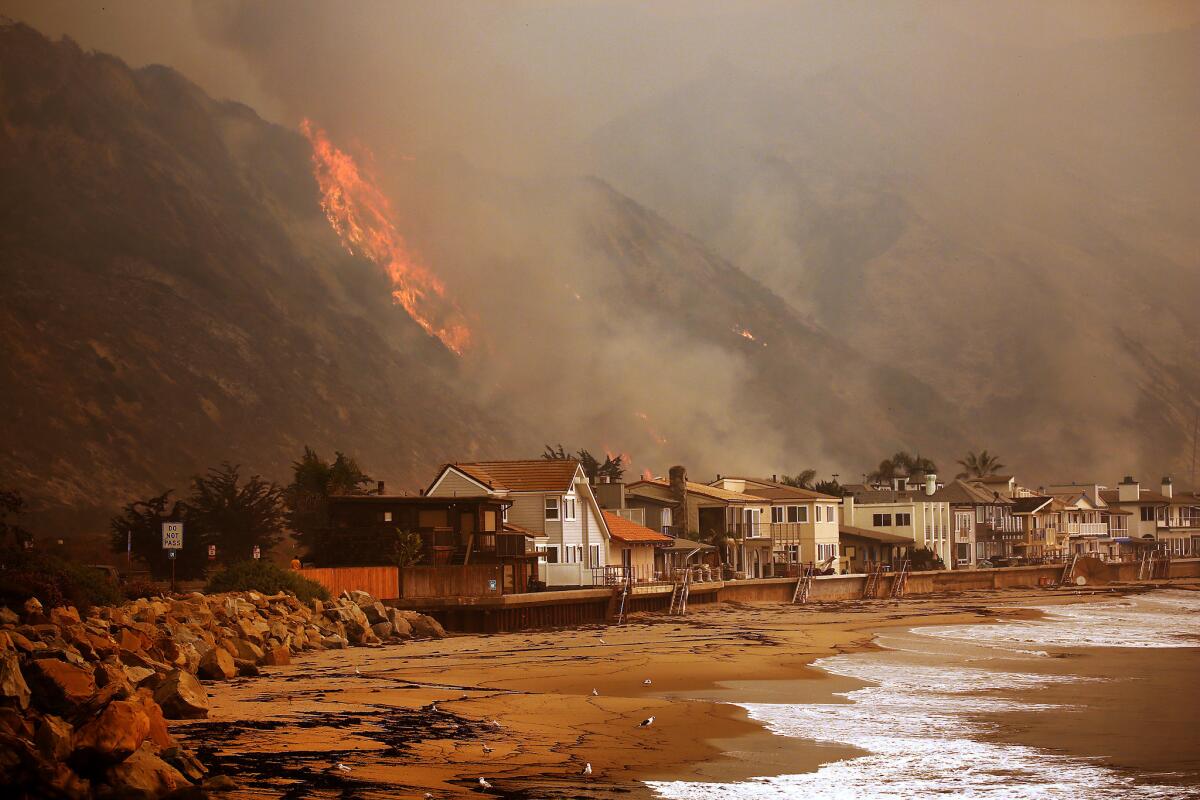
Thanks to the combination of climate change and several decades of American overconfidence about planning and land use, we’re on the doorstep of an era when dramatic disasters, floods and wildfires chief among them, threaten to become routine.
What do I mean by “overconfidence”? I mean that in nearly every corner of the country we have expanded our metropolitan regions into the path of, instead of away from, risk. Houston has for many decades seen nearly every flood plain as developable. Los Angeles has had the same attitude about many hillsides and canyons — even some that have burned again and again for centuries on end.
Mikael Wood’s top 10 albums of 2017
Kendrick Lamar, “Damn” (Top Dawg/Aftermath/Interscope)
The year’s most immediate album — and also its most replayable — “Damn” showcases the pride of Los Angeles hip-hop at the top of his game.
St. Vincent, “Masseduction” (Loma Vista)
Best architecture in 2017: In a tough year, plenty of highlights
This was a year that saw building booms continue in several American cities, including Los Angeles and Seattle, along with backlashes against those booms from homeowner groups and others. It was marked by a return to basic, even stoic architecture after a couple decades of flamboyant form-making. It was a year — above all — in which crises such as homelessness and climate change seemed to outpace any and all efforts to keep them in check or even, depressingly, to get a firm sense of their true scale. All the same, there was no shortage of highlights.
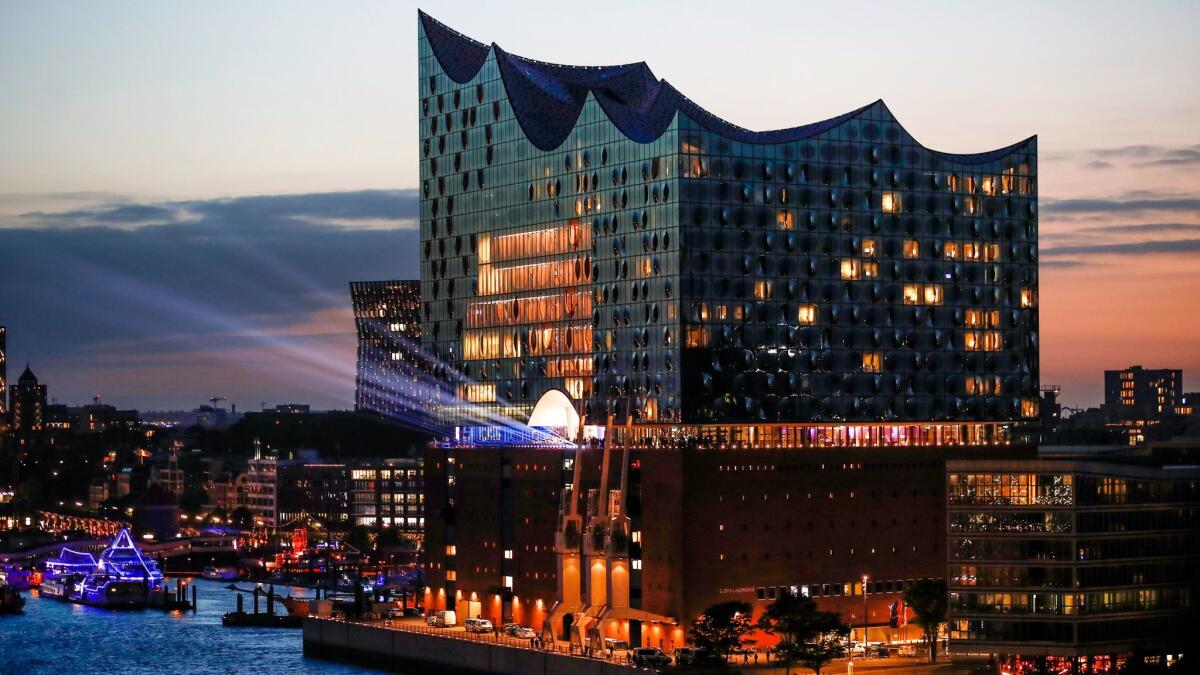
‘Twin Peaks,’ ‘Legion,’ ‘Danger and Eggs’ and ‘One Day at a Time’ among the best in TV in 2017
From the twists and turns of ‘Twin Peaks: The Return’ to the laughs and tears in the family sitcoms ‘One Day at a Time’ and ‘Young Sheldon’ to Michel Gondry’s Instagram, there was much to enjoy across platforms traditional and new in 2017.
Did Hollywood really make movies that pushed the culture forward in 2017?

Times reporters Jen Yamato and Tre’vell Anderson reflect on 2017’s best movies and their impact on culture.
Two years after #OscarsSoWhite propelled representation front and center at the Academy Awards, how much progress did Hollywood really make at the movies in 2017 — a banner year for conversations around social change that pushed the culture forward? Times reporters Tre’vell Anderson and Jen Yamato revisit the year in review and discuss how far the film industry still has to go.
JEN YAMATO: Now that we’re in the thick of awards season, it really feels like the huge steps forward for representation at the movies this year are coming into focus. The fact that films like “Get Out,” “Wonder Woman” and “Call Me by Your Name” struck such powerful chords with audiences and critics alike — and are in the awards mix — speaks to a hunger for the kind of inclusion Hollywood has been sorely lacking for, well, ever. But how would you grade 2017 on the whole? Can movies effect real social change? How many cinephiles went vegan because of “Okja?” How close did Hollywood come to “solving” #OscarsSoWhite?
If I’m giving Hollywood a grade, it’s going to be an “I” for incomplete. There’s still more work to be done.
— Tre’vell Anderson
Kenneth Turan’s 10 best films of 2017
The year grinding to a close was a paradoxical one for cinema. There was no lack of excellent films in all genres and from all corners of the world, with one notable exception: Hollywood USA.
Yes, the major studios that make up the nominal film capital of the world spent a lot of money and turned out a lot of films, but, with the exceptions noted below, very few of them were fated to grace 10-best lists, mine or anyone else’s.
I don’t mean this because they had mass popularity on their mind. Hollywood’s legacy as a creator of popular entertainment is one I take seriously, and some of my favorite moments in cinema have been spent watching hugely popular movies I loved as much as anyone.
‘Call Me by Your Name,’ ‘The Florida Project’ lead Justin Chang’s 12 best films of 2017
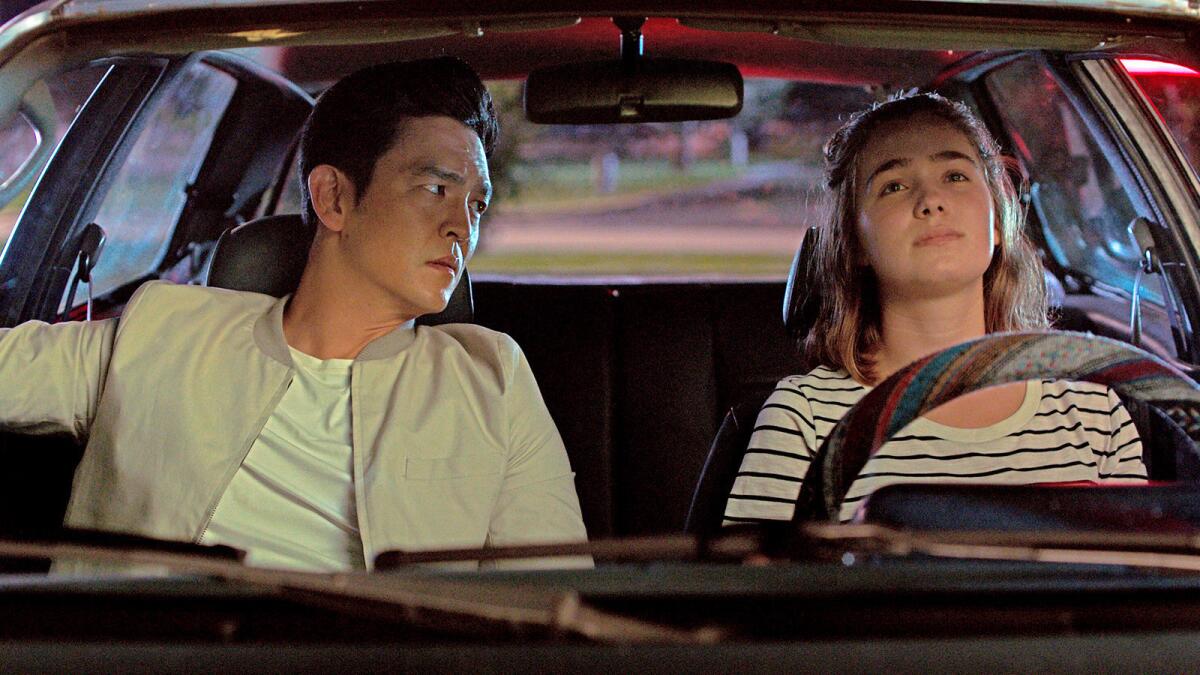
A lot of walls came crashing down in the American movie industry this year, mostly for the better, though often in ways that made us feel a whole lot worse. The film world, like the greater world that it reflects, has changed irrevocably in the three months since the first wave of sexual harassment accusations emerged against Harvey Weinstein, the beginning of a reckoning that continues to rage in every sphere of political and cultural influence.
The satisfaction of seeing justice being done was matched and ultimately eclipsed by the horror of realizing just how significant the damage was, and how long so many victims had been forced to suffer in silence. Those of us who write about the movies couldn’t help but consider the matter of our own silence — our tendency to brush over uncomfortable matters and look the other way, or to avoid the eternally challenging question of whether we can separate the quality of the art from the misdeeds of the artist.
The year reality and ‘reality’ fully intertwined
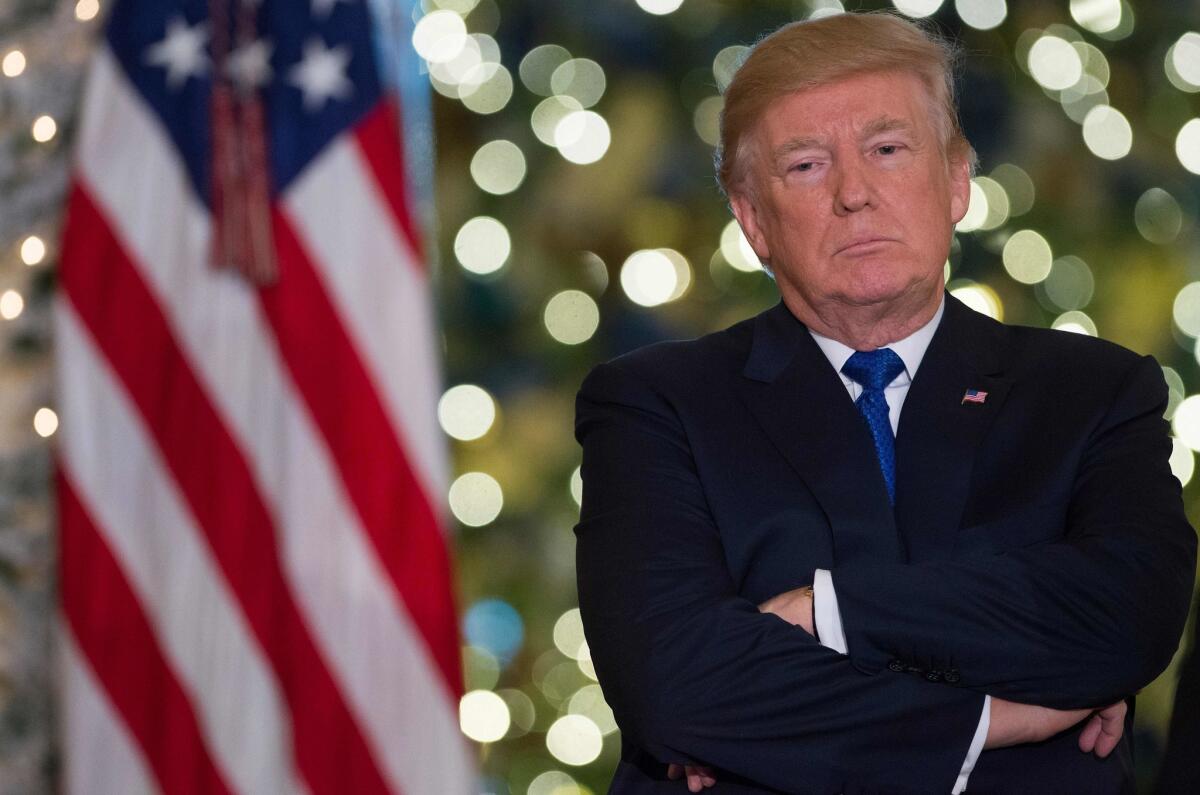
The world, you may have noticed, is in a jumble. Facts are in dispute, even when they have been demonstrated; lies are repeated as truths, even when they have been discredited. It’s reality as reality TV, in this Year of Our Fake News 2017, where nothing is real but anything can be “real.”
When nothing can be trusted, anything might be true; and when anything might be true, nothing can be trusted.
‘The Vietnam War’ and the best new video and streaming picks of 2017
Here’s the bad news: We may look back at 2017 as a turning point in home entertainment … and not necessarily a positive one. Next year, Disney is set to launch its own subscription service, with Pixar, Marvel, “Star Wars” and possibly 20th Century Fox among its assets.
More major media companies may follow suit, pulling their archives from cable and Netflix and keeping them locked behind their own separate paywalls. Next year at this time, we might all need dozens of accounts (with dozens of passwords and a pileup of fees) to get the same level of home video options we’re getting now.
The solution? Buy more Blu-rays and DVDs. Here are some of the year’s best:
3. “The Vietnam War” (PBS)
Documentarians Ken Burns and Lynn Novick have rarely been as on their game as they are with this exhaustive look at the United States’ involvement in Vietnam, which considers how the war changed the country in ways that still resonate.